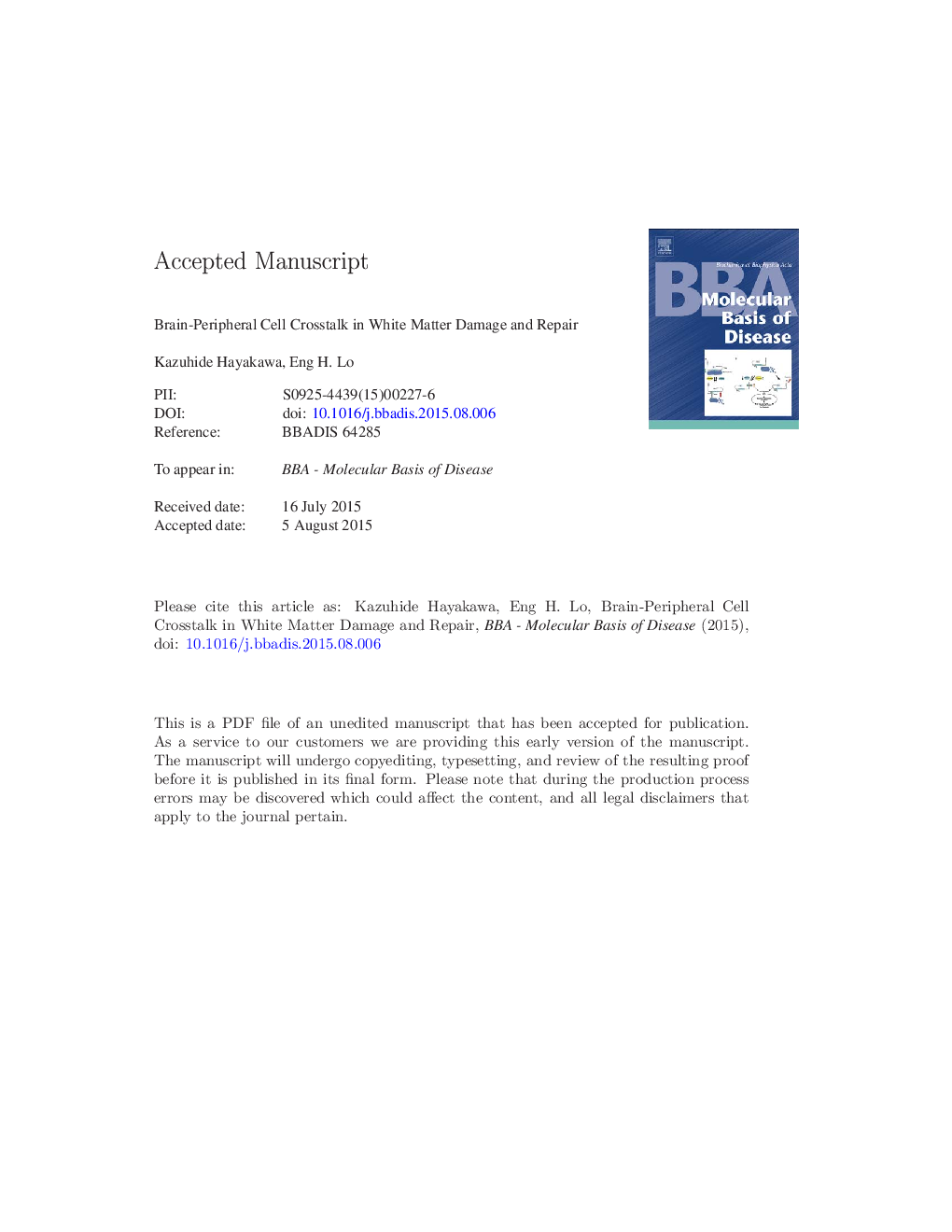| Article ID | Journal | Published Year | Pages | File Type |
|---|---|---|---|---|
| 8259354 | Biochimica et Biophysica Acta (BBA) - Molecular Basis of Disease | 2016 | 22 Pages |
Abstract
White matter damage is an important part of cerebrovascular disease and may be a significant contributing factor in vascular mechanisms of cognitive dysfunction and dementia. It is well accepted that white matter homeostasis involves multifactorial interactions between all cells in the axon-glia-vascular unit. But more recently, it has been proposed that beyond cell-cell signaling within the brain per se, dynamic crosstalk between brain and systemic responses such as circulating immune cells and stem/progenitor cells may also be important. In this review, we explore the hypothesis that peripheral cells contribute to damage and repair after white matter damage. Depending on timing, phenotype and context, monocyte/macrophage can possess both detrimental and beneficial effects on oligodendrogenesis and white matter remodeling. Endothelial progenitor cells (EPCs) can be activated after CNS injury and the response may also influence white matter repair process. These emerging findings support the hypothesis that peripheral-derived cells can be both detrimental or beneficial in white matter pathology in cerebrovascular disease. This article is part of a Special Issue entitled: Vascular Contributions to Cognitive Impairment and Dementia, edited by M. Paul Murphy, Roderick A. Corriveau and Donna M. Wilcock.
Related Topics
Life Sciences
Biochemistry, Genetics and Molecular Biology
Ageing
Authors
Kazuhide Hayakawa, Eng H. Lo,
